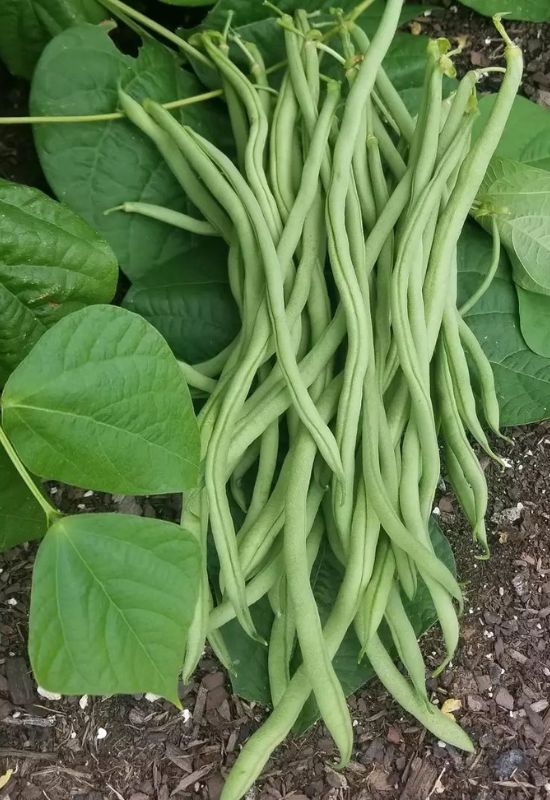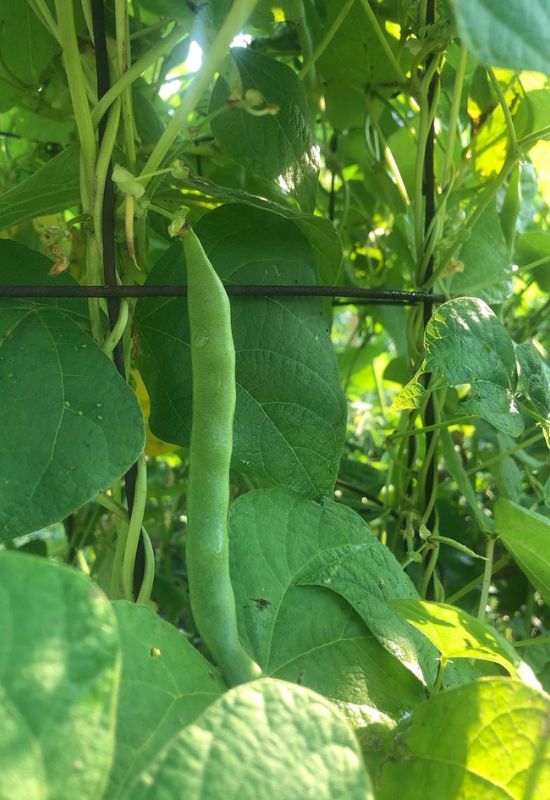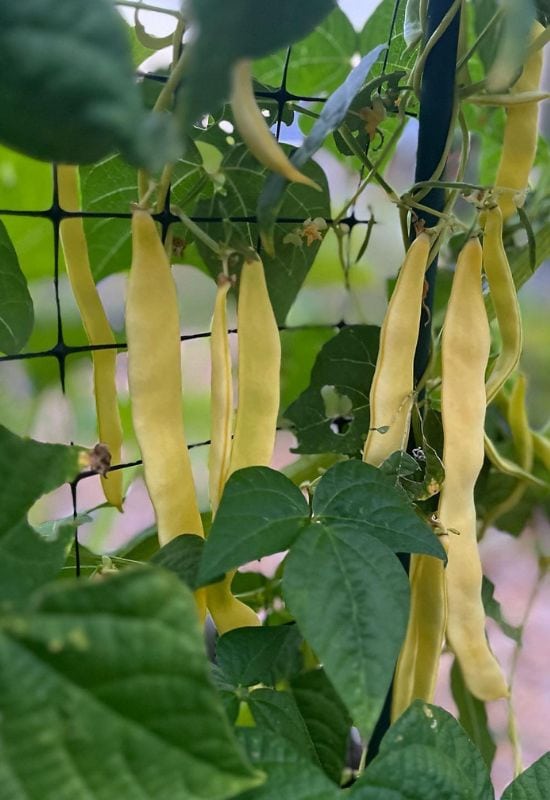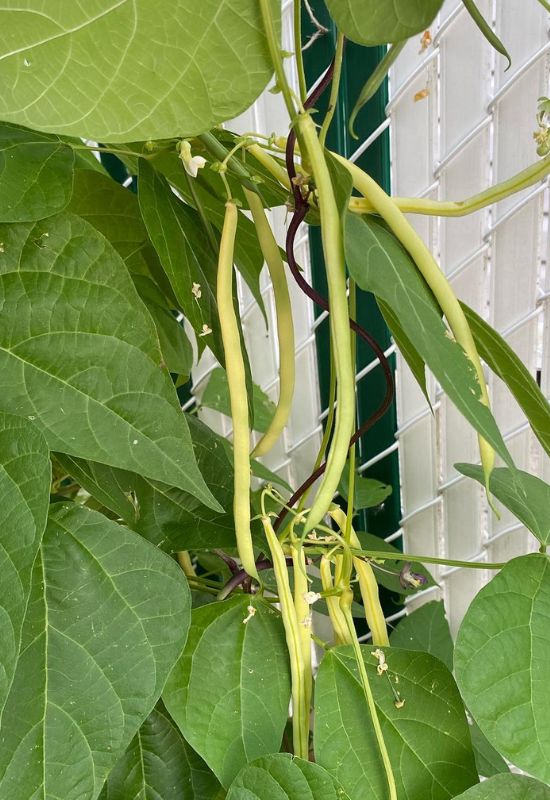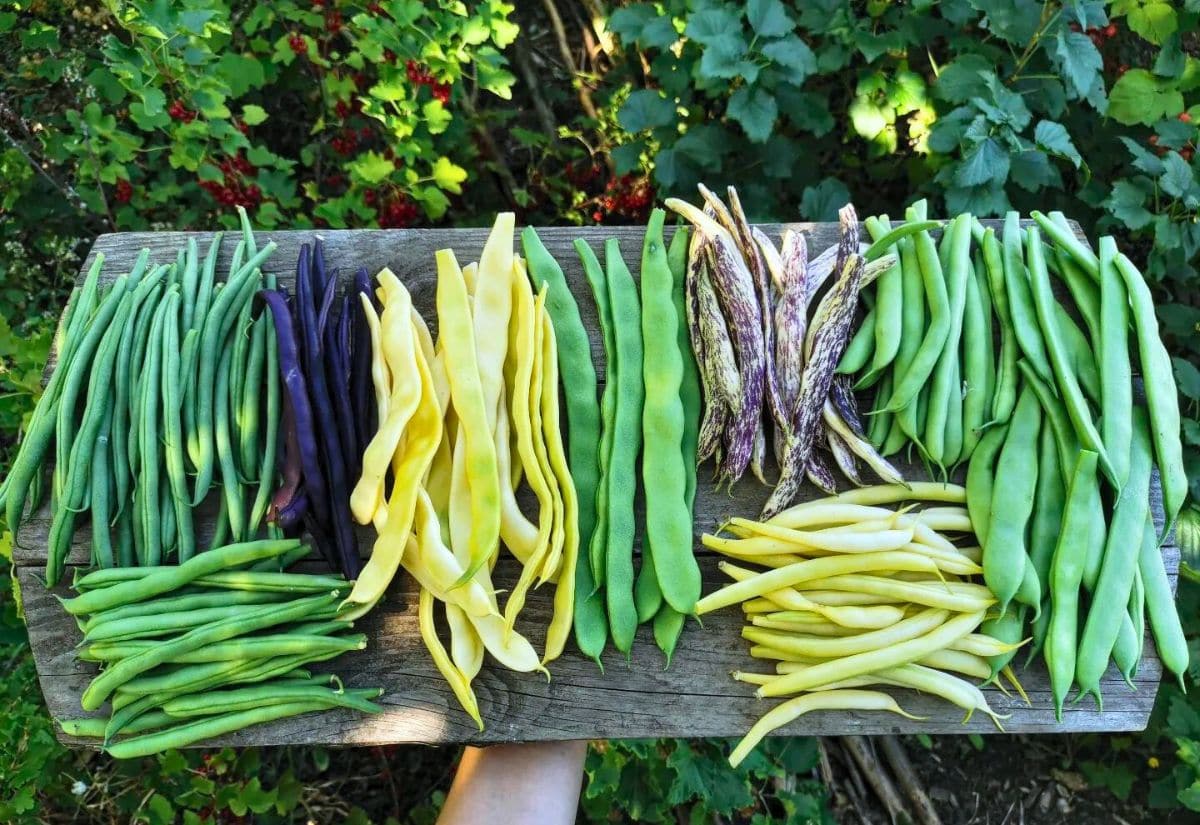
A bean teepee covered in lush foliage and sporting delicious beans is a wonderful addition to any garden, but pole beans are a great vegetable to grow even if you only have space for a few pots on a balcony.
Not only do runner beans taste amazing, but these twining vines will produce a huge harvest all season long, but how can you possibly decide which variety to grow when there are so many different types of pole beans to choose from?
No more furrowing brows over seed packets! We’ve done the legwork and curated a list based on flavor, color, maturity time, and yield.
Here is our list of 11 amazing green, yellow, and purple varieties of pole beans to grow in your garden this year.
All About Pole Beans
Pole beans are long vines that produce lots of beans all season long. Unlike peas which climb using tendrils, pole beans will wrap their thin stems around anything in their effort to climb upwards (this is why they are referred to as twining vines). While many pole beans are around the height of an adult, some of these vines can reach upwards of 3.5m (12 feet) tall.
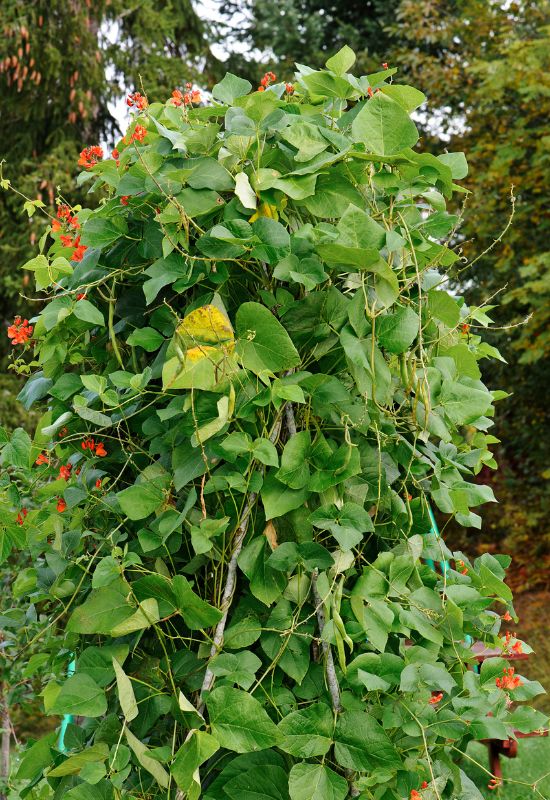
Pole beans are indeterminate, meaning they will continually produce flowers and beans along the main stem, so you will have new beans to harvest all summer long. As such, pole beans are heavy-yielders and you will usually be able to harvest 3.6kg (8 lbs.) from every 3m (10ft)
Most pole bean varieties take between 50 and 70 days after germination to produce harvestable pods. While they might take slightly longer to mature than bush types, pole beans will typically be more resilient to the diseases that can plague your garden.
Advantages Of Growing Pole Beans Instead Of Bush Beans
Here are some of the benefits of growing pole beans:
11 Best Types of Pole Beans for Your Garden
There are many great pole bean varieties out there for you to grow, each with its own unique characteristics and flavors. Here are a dozen awesome options that go well in any garden:
1: Fortex
Fortex are one of the most popular green beans for home gardeners. These French beans are heavy yielders on vigorous vines that average 1.5m (5 feet) tall.
The beans are round, stringless, and sweet with a firm crunchy texture. They can grow to be over 27cm (11 inches) long or they can be harvested at 15cm to 20cm (6-8 inches) for skinny filet style beans.
Unlike most beans that quickly become fibrous and tough when over mature, Fortex retain their firm texture and great flavour even after the bean seeds begin to fill out.
They are great fresh or cooked, and they also freeze very well. Fortex mature in around 60 days for filet beans, or around 70 days for long mature pods.
2: Hilda Romano
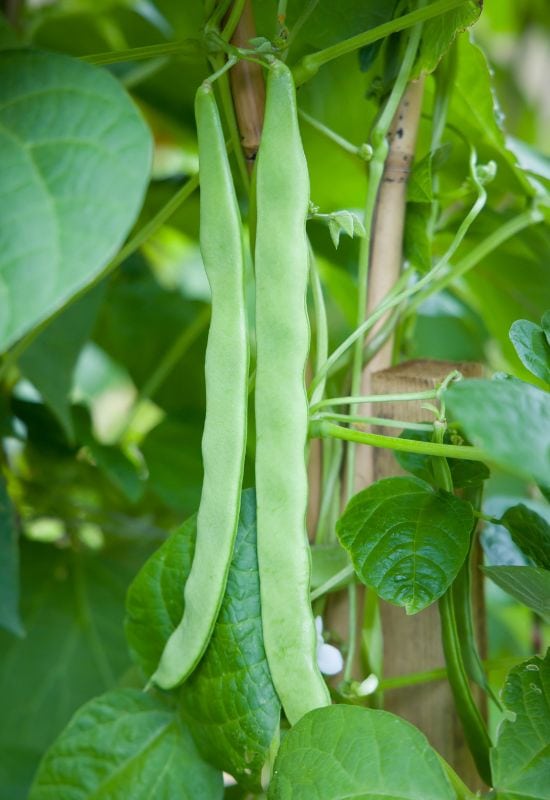
We have grown Hilda Romano for many years and they are an exceptional bean. The tall vines can easily reach 2.5m (8 feet) tall, and you will need a tall, sturdy trellis to support the huge harvest you will get.
(They work excellent for making a teepee or other play tent for children). You will be able to pick your first Hilda Romano 60 days after germination, and they will continue to produce until they the plant is frost-killed in the fall.
Like a good Romano, these beans have flat, broad pods that are stringless. Hilda Romano beans are typically around 23cm to 26cm (9-10 inches) but some can be 30cm (12 inches). They are extremely sweet and tender when harvested on time, and they are great fresh or cooked. Plus, they freeze very well.
Hilda Romano are very similar to Helda, but they stay tender longer. Even so, make sure to harvest Hilda Romano before the beans start to swell or they will turn fibrous.
They are resistant Bean Common Mosaic Virus (BCMV), and they also grow well in hot weather, making them an exceptional all-summer bean.
3: Kentucky Wonder
The Kentucky Wonder is another very popular bean amongst new and seasoned gardeners. An heirloom from at least the 1850s, it went by many different names until it officially became the Kentucky Wonder in 1877.
Even though it is grown in the hot weather of the deep south, Kentucky Wonder germinate well in cool weather which means they are popular with Northern growers, too. It also means they can be started earlier than most other beans for an early crop.
Kentucky Wonder take around 70 days to mature once the seeds germinate. Large clusters of tiny flowers turn into concentrated sets of green beans that are easy to harvest. The pods are stringless when young, and average 18cm to 25cm (7-10 inches) long.
They have exceptional flavour and can be used as a snap bean or left to fully mature and harvested for a dry bean (which many say are reminiscent of a pinto).
Kentucky Wonder have decent resistance to rust. The vines can grow up to 2.5m (8 feet) tall, so make sure to start off with adequate trellising.
4: Kentucky Wonder Wax
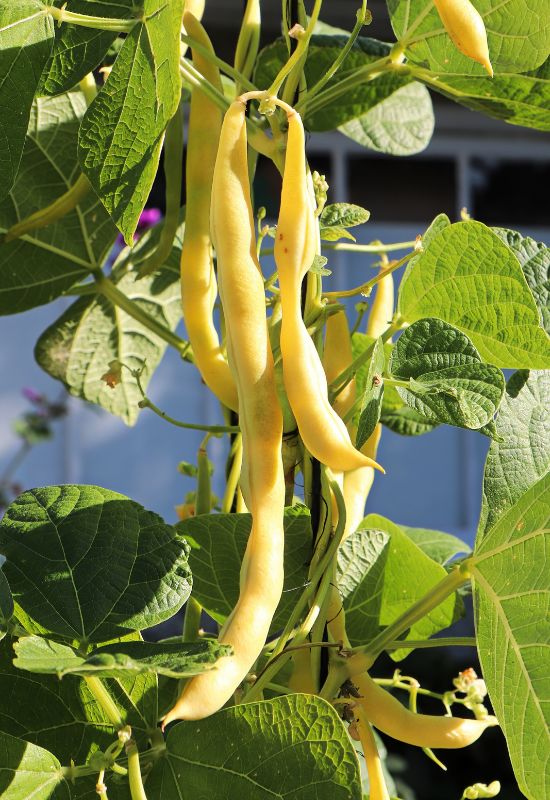
Kentucky Wonder Wax shares many of the same qualities as the Kentucky Wonder, except the beans are a beautiful creamy yellow.
Maturing in 68 days from germination, the vines reach up 2.1m (7 feet) and need a sturdy trellis. The round pods average 20cm (8 inches) long and are stringless when they are harvested on time. They should be harvested young to get the smooth texture and superb flavour, and they are great fresh, cooked, or frozen for winter use.
5: Marvel Of Venice
Marvel of Venice is a Romano wax bean. This Italian heirloom has beans that are flat and nearly 2cm (3/4 inch) wide and 20cm to 23cm (8-9 inches) long.
They are stringless when they are young and very tender with a buttery flavour. A great addition to the garden, they are also unique at a market garden where yellow Romanos are less common.
The vines are very vigorous and reach up to 2.5m (8 feet) tall and they produce a heavy yield, so make sure your trellis is tall and strong.
Even so, each plant only spreads to around 30cm (12 inches) wide so you can produce a lot of beans in a very small footprint. Marvel of Venice begin producing in 55 to 60 days.
There are typically white-seeded and black-seeded varieties available. Both taste very similar but the black take slightly longer to mature than the white ones do.
6: Monte Gusto
Monte Gusto are one of the best tasting yellow beans out there and are claimed to be far superior to any wax bush bean. They have a really great bean flavour and a nicer texture than many other wax beans.
The stringless beans are very unform and can be harvest as a filet at 18cm (7 inches) or left to reach 20cm (8 inches). Monte Gusto will mature in around 60 days, and you will get a very long harvest window producing lots of beans.
Harvest Monte Gusto when the pods still have a snap to them, and before the seeds swell inside.
7: Northeaster
Here is anther flat Romano bean that matures very quickly. Northeaster are ready to harvest after 56 days, making them earlier than many other Romanos. The young seedlings are very hardy that grow into strong, vigorous vines.
Northeaster pods average 20cm (8 inch) long and 2cm to 3cm (1 inch) wide. They are very sweet with a rich flavour. They typically stay tender than many other varieties, so you have a larger window to harvest before they become fibrous.
It is very easy to save your own seeds when growing Northeaster. Let them fully mature and finish drying them on the vine if possible. If drying outdoors is not possible, then cut the entire plant and hang it upside down in a dry, well ventilated place until the beans are dry and hard and rattle in the pods.
8: Purple Peacock
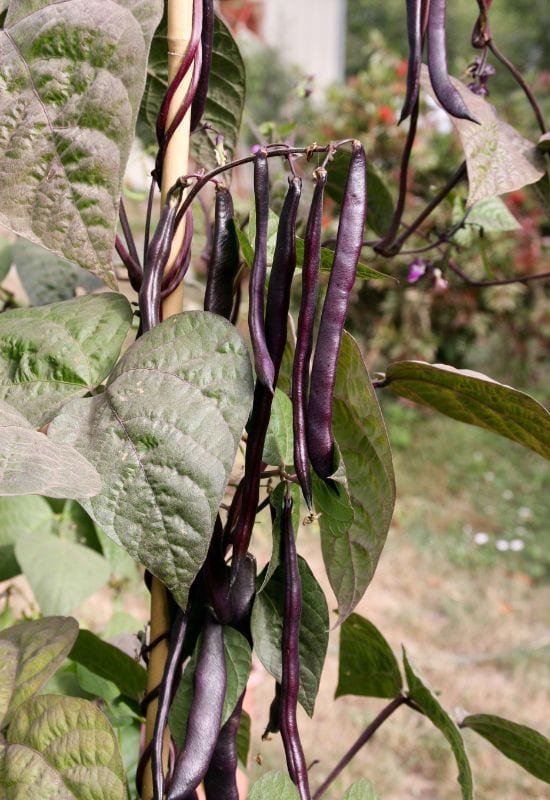
These deep purple beans are as much fun to look at as they are to grow and eat. The seedlings are very hardy, and the plant has purple stems and dark green leaves and grows to about 1.8m to 2.4m (6-8 feet) tall. Light purple blooms will appear, and turn into dark purple beans in about 70 days.
Purple Peacock are an heirloom from the Ozarks in the 1930s. The pods are very sweet and tender, and stringless. Their ideal size is around 13cm (5 inches) but they remain tender and flavourful when left to grow longer than this.
Purple Peacock grow very good in cool weather and will perform while other bean varieties will be struggling and rotting out. This also means you can plant them earlier in the season than many other varieties to get an early harvest.
Purple Peacock store very well for fresh eating. Alternatively, you can leave them to fully mature into dry beans which are good for soups and stews.
9: Red Noodle
While a different species than the common snap bean, the Red Noodle (Vigna unguiculata) is a Chinese heirloom that grows from a small red bean into a 2.4m (8ft) towering vine. The beans are long rope-like pods reaching up to 55cm (22 inches) long and have a deep red/burgundy colour.
The beans form in clusters of up to 4 beans and mature in around 85 days. They are stringless with a good flavour and highly nutritious. They red pods will keep a tinge of colour when they are sauteed but will fade to green when steamed or otherwise cooked.
Red Noodle are widely adaptable to many growing conditions, including areas of high heat or humidity and they can be grown almost anywhere the season is long enough.
10: Seychelles
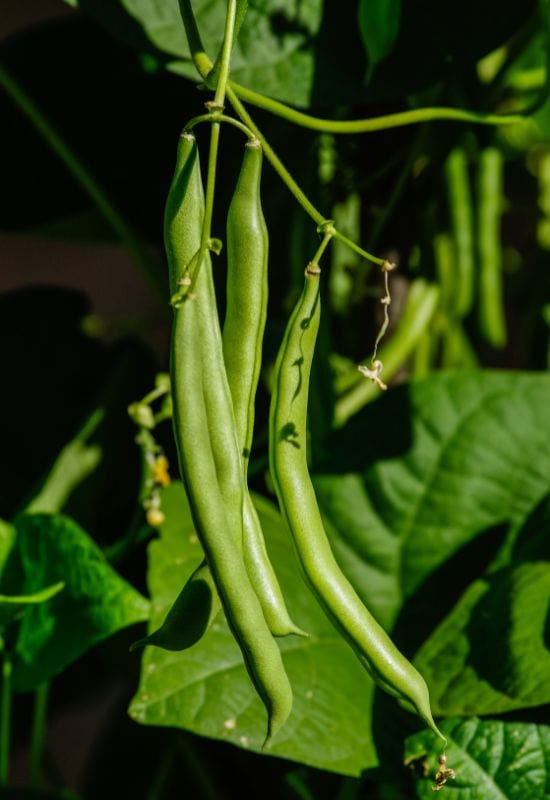
These Dutch beans are another common green bean to many home and market gardeners. They form in clusters, making them quite easy to harvest. They grow very quickly and are ready to harvest after only 55 days.
The beans are stringless, smooth, plump and about 12cm to 15cm (5-6 inches). Seychelles are also very slow to develop seeds, giving you a large window of opportunity in which to harvest.
Seychelles have fairly good resistance to Anthracnose and Bean Mosaic Virus. The vines reach 2.1m to 2.7m (7-9 feet) tall but still grow well in containers.
11: Yard Long
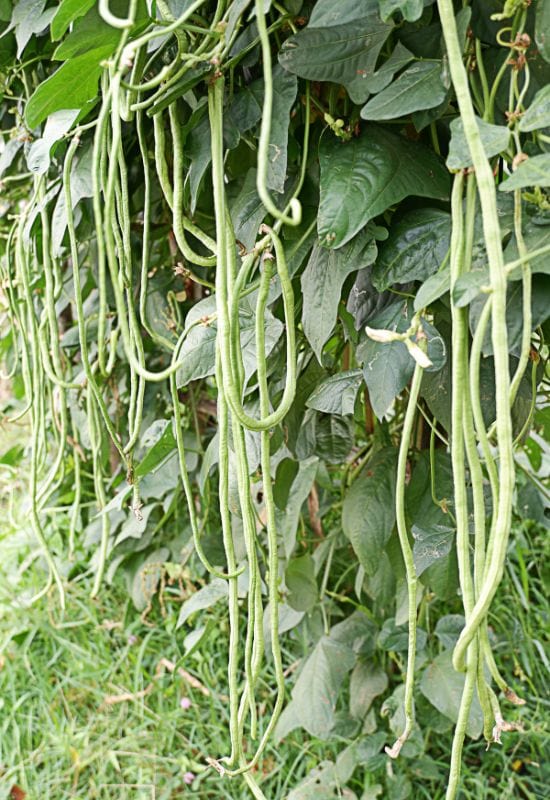
If pole beans are superior in flavour to bush beans, then Yard Long are the crème-de-la-crème. These incredible green beans have an excellent crips flavour and are nice and sweet. While very versatile in the kitchen, they are especially popular in stir fries.
Yard Long came to North America in the 1970s, and are also know as Asparagus Bean or Noodle Bean, both of which adequately describe this bean. And yes, the Yard Long can easily reach an impressive length of just under a meter (3ft), though 38cm to 45cm (15-18 inches) is generally more common.
Maturing in around 70 days, the seeds are slow to develop so the pods have a long time to reach their impressive lengths while still staying tender and stringless. Even if the beans do produce seeds, they small black beans are excellent dried and useful in many dishes.
Yard Long grow in a variety of conditions and have been found to be especially good in hot conditions.
Tips To Growing Pole Beans
Many people are daunted by the fact that pole beans need trellising, and so are deterred from growing these incredible vegetables. But don’t worry, not only are there countless DIY trellis ideas online that are very easy, here are a few tips to make your pole beans a success.
Sow, Grow, and Enjoy
Choosing which variety to grow is fun, but it can be a daunting task. Especially when there are so many different cultivars available and each has a unique flavour and qualities. Hopefully, this article will give you a few varieties of pole beans to try so you can have exactly the harvest you want.

Written By
Amber Noyes
Amber Noyes was born and raised in a suburban California town, San Mateo. She holds a master’s degree in horticulture from the University of California as well as a BS in Biology from the University of San Francisco. With experience working on an organic farm, water conservation research, farmers’ markets, and plant nursery, she understands what makes plants thrive and how we can better understand the connection between microclimate and plant health. When she’s not on the land, Amber loves informing people of new ideas/things related to gardening, especially organic gardening, houseplants, and growing plants in a small space.

